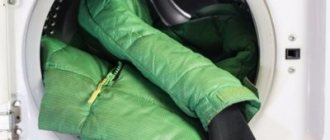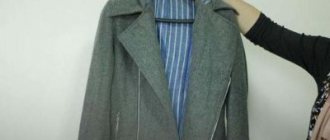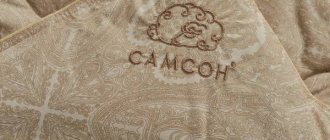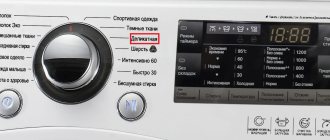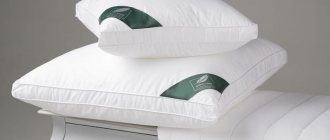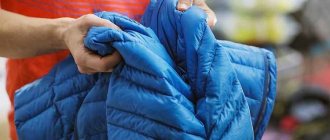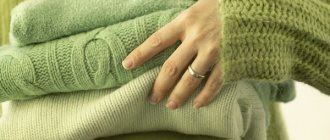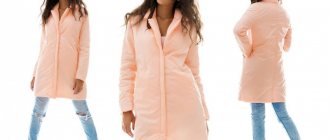The correct selection of a down jacket at the purchase stage - according to your lifestyle and natural and climatic conditions - depends on how successfully you can wash it at home. When buying a light down jacket for daily wear, you should be prepared to wash it frequently, compared to dark models: in urban winter conditions, outerwear gets very dirty and requires almost weekly washing. Frequent washing also risks washing out the water-repellent layer, causing clothes to quickly become wet and dirty. It is better to ask the seller about acceptable washing methods before purchasing. It is also worth paying attention to the filling: jackets with down are more problematic to wash than with synthetic fillings (sintepon, Thinsulate). And down jackets with elements of genuine leather, suede or non-removable fur can only be washed by dry cleaning (to avoid deformation, shedding and shrinkage), and at home - wipe with a damp cloth. Below we will tell you step by step how to properly wash a down jacket in a household washing machine and not spoil its valuable filling, turning a bulky warm jacket into a thin windbreaker.
How to prepare a down jacket for washing
Don't start washing right away. Understand the features indicated by the manufacturer.
Study the technical details on the label
All useful information is indicated on the label. If you see that a manufacturer recommends hand washing, listen to them. If there is no such mark, you can use machine wash.
The label also indicates at what temperature it is advisable to wash/dry the item, whether the item can be bleached or taken to the dry cleaner.
Important! If some parts - sleeves, pockets, jacket hems - are trimmed with natural fur trim, and it cannot be removed, the only possible option is dry cleaning.
Remove recent stains
If your jacket gets dirty, do not leave dirt or stains, but try to remove them with a dry cloth. The main rule is not to rub. Otherwise, the dirt will be driven deeper into the material, and the area of contamination will become larger.
On light-colored down jackets, the edges of the sleeves and neckline get dirty most quickly. Such places need to be washed separately. Take a soap solution, apply, and gently wipe the stained areas. In case of severe contamination, you can use a stain remover. For example, a liquid product from BAON easily copes with stains of any origin. Can be used to clean carpets and furniture because it washes out easily. What is important is that it preserves the color!
Stain remover
Unfasten the edge
Natural fur cannot be washed. It will mat and look unsightly, so the edge is usually removed. If the fur is sewn on, comb it out with a comb after washing. And then a couple more times during the drying process. If we are dealing with painted parts, it is wiser to send the product to dry cleaning. If the hood and jacket are the same color, do not separate them.
Empty your pockets
It is recommended to fasten buttons, zippers, and buttons, and turn the jacket inside out. Clear pockets of debris, things, and small items. Remove the straps and tie or hide the ties. Even a coin or a small candy wrapper can break the equipment or stain the product. If there are holes in the jacket - inside or outside - they need to be repaired. Otherwise, the filler will try to “escape.”
How to wash a down jacket
When the product is prepared, all that remains is to do the following.
Choose a detergent
Another thing to consider is purchasing the right laundry detergent.
Dry powders foam excessively and the foam is difficult to rinse out. There is a risk that unsightly soap stains will remain on the surface, and you will have to wash it again. It is not recommended to wash products with a membrane coating with powder, because the granules become clogged in the pores of the material. This way the membrane may lose its beneficial properties.
Liquid products produce minimal foam, dissolve better in water, and do not clog into the pores of the material. In addition, reduced foam options are available.
As for products filled with natural down and feathers, special detergents are developed for them. They help preserve the beneficial properties of the filler and also avoid streaks. For example, washing gel from BAON foams less, is easier to rinse, and is used sparingly - enough for 15 washes. It has a gentle effect: the filler clumps less and the impregnation is not washed out.
Gel for washing down and feather products
There are also special gels for membrane tissues. They carefully remove dirt without washing away beneficial impregnations. They do not clog into the pores of the material, but are rinsed well.
Gel for washing items made from membrane fabrics
A standard rinse will cause a situation in which the fluff sticks together into dense clumps. Therefore, we do not recommend saving on it. It is better to choose a specialized product.
Buy laundry balls
You will also need balls - rubber or regular tennis balls. They are placed together with the jacket in a special washing bag or loaded directly into the drum. The larger and longer the down jacket, the more balls there should be. On average, from 4 to 8 products are used. For example, for a model just below the knee, 6 balls will be enough, but for the same oversized product you need 7-8 balls.
Down jacket with contrast lining
Long checkered down jacket
If you settled on classic tennis balls, it is better to choose white models. This way there is less risk that they will paint over the product. If you want to avoid risks as much as possible, soak the balls in bleach for 2-3 hours.
For reference! If you didn't buy the balls, you can do it differently. Select the mode with the minimum temperature and number of revolutions. Once the down jacket is washed, thoroughly beat its contents. Some housewives use a beater. We recommend fluffing your jacket for 2 hours after finishing washing. However, even in this case it cannot be guaranteed that the material will not break. Therefore, it is better to buy balls or go to the dry cleaner.
Set the washing mode correctly
If the equipment is designed for a load of 3.5–4 kg, only a small down jacket will fit into it. For example, a lightweight model with a hood. It is quite thin and small. As for temperature, the water should not be hotter than 30 degrees.
Lightweight down jacket with hood
Don't know which program to wash your down jacket? Some devices offer a mode for outerwear. Another suitable option is delicate wash, wool and silk.
It is sometimes recommended to disable the spin function. But just as it is difficult to wash a product at home, it is also difficult to dry it, since it will absorb several buckets of water. Therefore, we recommend leaving the spin cycle, but limiting the speed to 400–600 rpm. At higher speeds, the filler clumps.
When the wash is complete, repeat the rinse procedure to completely remove the foam.
How to dry properly
When you have figured out how to properly wash a down jacket, all that remains is to understand the nuances of drying it. Let's imagine that you take out a jacket. Don’t be alarmed if you see that the down jacket has become like a thin autumn windbreaker, and the filling has bunched up in the corners. This is not the end. The drying stage will help return feathers and down to their rightful places. The main thing is to know exactly how to dry.
The diagram looks like this:
- unbutton clothes, pockets, zippers;
- turn right side out;
- hang on hangers;
- leave to drain in the bathroom if not all the moisture has been squeezed out;
- Place in a room with good ventilation or on a balcony;
- You can speed up drying using warm air generated by a hairdryer;
- knead the filler with your hands often and shake the product so that it quickly returns to its shape and the filler is evenly distributed inside the down bag.
If it was not possible to distribute, you can rinse the product again and dry it again using our instructions.
For reference! Make sure the product is completely dry. Wet filling runs the risk of molding or rotting, resulting in the jacket having to be thrown away.
For example, in long down jackets with quilting, you need to carefully knead each section with your fingers. You will feel how you distribute the feathers and fluff with your hands. However, it is worth it because once the coat dries, it will look like new.
Long down jacket-cocoon
The faster the jacket dries, the lower the risk of unpleasant odor.
A negative feature of down products is the long drying time. They cannot dry in one day. But at the same time, the longer they dry, the higher the risk of developing a characteristic mold smell.
How long it will take for a down jacket or jacket with padding polyester to dry after washing depends on the conditions in the room and the amount of insulation. This usually takes from 1 to 3 days.
The appearance of an unpleasant odor from clothes can also be caused by a large number of bacteria and mold in the drum of the machine. And then even recently washed items will stink. Don’t forget that any washing machine needs to be cleaned and disinfected periodically.
What to do if problems arise
Sometimes, after washing a down jacket in an automatic machine, unpleasant situations can arise.
The fluff has gone astray
If nothing helps to restore the former volume, there is no need to throw things away. Try to restore the beauty and functionality of the product. You need to do the following:
- send the item for rinsing, and then for 2-3 delicate spin cycles - all the time with balls;
- Roll up the damp down jacket and put it in the freezer - this shock freezing will help avoid the down being knocked down and the product will become voluminous again.
For reference! The same method works for duvets and other products with natural padding.
There are still divorces
You have carefully studied the information, including which mode to wash the down jacket, but there are still stains on the surface of the jacket. This happens when there is too much detergent and too little rinse. If the defect is small, take dishwashing detergent, whisk it on a soft cloth and wipe the surface with it.
Sometimes it doesn't help. Then you need to do an additional rinse or wash again, but add less gel.
For reference! Sometimes what looks like streaks is a change in color. In this case, nothing will help.
Dark stripes and spots appeared
This indicates that the product is heavily soiled. And washing did not remove all the dirt, so the residue comes to the surface. To remove such stains, wet a sponge with water and rub with laundry soap. Then apply the solution to the stain and remove with a clean sponge.
If yellow stains appear, we recommend that you dab some dishwashing detergent on them, and then send the jacket for a second wash.
There is an unpleasant smell
Sometimes after washing the item starts to smell bad. This happens for a number of reasons:
- the jacket was soaked;
- not washed well enough;
- did not dry out, the fluff began to deteriorate.
There is only one way out in such a situation: to wash the item again, but in compliance with all the rules.
Useful tips and trouble prevention.
Never do this.
- ☠️ It is strictly forbidden to dry winter clothes on a radiator or in close proximity to any heating devices. You can ruin the fabric, stains and stains may appear, and the fluff will give off a terrible smell , which is then very difficult to get rid of. I quote one lady from a forum on the topic: “I thought of putting a dryer on the radiator and it went out! It smelled like rotten meat! I took it to the trash heap and thought, “Where was my brain?”
- ☠️ You can't dry your down jacket in the bathroom. There is little air, high humidity, poor ventilation. It will also get moldy, look.
- You should also or other surfaces where there is no air access to the down jacket from all sides.
- ☠️ Do not dry your down jacket by throwing it over the crossbar. And there is no air access and traces may remain.
- ☠️ Do not use clothespins - then there will be marks.
Useful tips on drying down jackets.
- ► Usually, down jackets are washed in autumn, winter or early spring (when it is cold and damp outside). But if you are hesitant to wash your down jacket right now, postpone this procedure until summer . A down jacket in a dry, warm, shady place will dry quickly (a day) and you guarantee both yourself and it at least one more “working” season.
- ► If you can’t put it down as needed, hang it on wide, reliable hangers in a dry room.
- ► It will be very useful to treat a completely dry down jacket with special water-dirt-repellent agents . It will get wet and dirty less, which means there will be less hassle with washing and drying.
What could be an alternative?
If the capacity of the equipment is small, and the jacket is long and bulky, try washing the product by hand. We tell you how to wash a down jacket at home and without a washing machine:
- no soaking required;
- It is advisable to wash vertically - not on a hanger above the bathtub;
- use a special gel that is applied with a sponge and washed off with a shower;
- no bleach;
- water temperature - 30 degrees;
- rinse in the shower several times;
- dry in a horizontal position.
This way you can tidy up your outerwear.
How to wash jackets with other fillings
Down and feather fillings are the most popular in the field of winter jackets. However, manufacturers also use other materials. They protect no worse from frost, wind, and humidity. At the same time, products also require delicate handling:
- Ecopooh
A popular synthetic filler, which in its properties is close to natural. Hence its high popularity. Such jackets look and warm no worse than analogues with natural filling. At the same time, the material turns out to be quite light and durable. The tag will indicate at what temperature to wash the down jacket. A coat with eco-down requires maintaining a temperature of up to +40 degrees, and a speed of up to 400 rpm. You can't twist it by hand. It is better to dry in a horizontal position.
Jacket (eco down)
- Holofiber
Such products are less susceptible to washing than down products. They withstand hand and automatic washing, full active spinning, and do not deform. Dry in the same way as down jackets: on hangers over the bathtub or on the balcony. Then you need to shake them to return the filler to its place.
Video help.
Several ways to get rid of some stains on a down jacket without washing.
Another effective way to remove stains on collars or other contaminated areas locally.
Well, a very interesting and non-standard way of drying a down jacket . Probably only suitable for handy men who know what a “garage” is)) But I recommend everyone to watch it to feel proud of our craftsmen))
